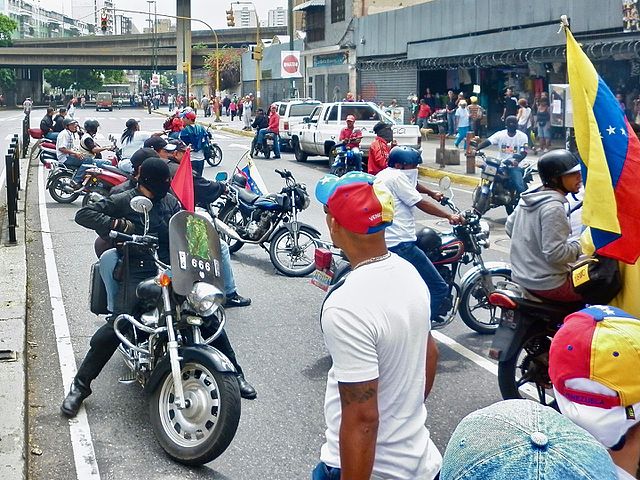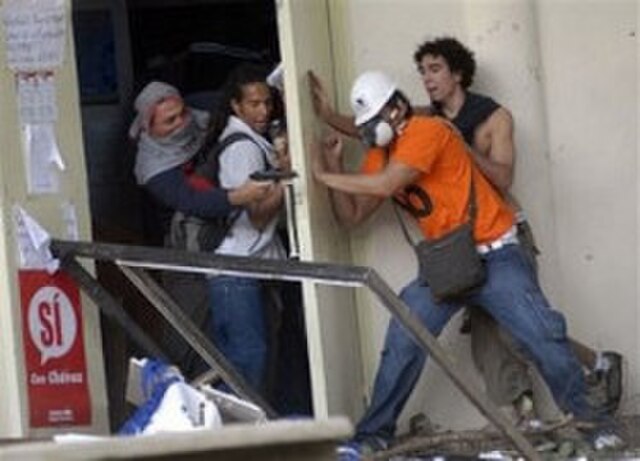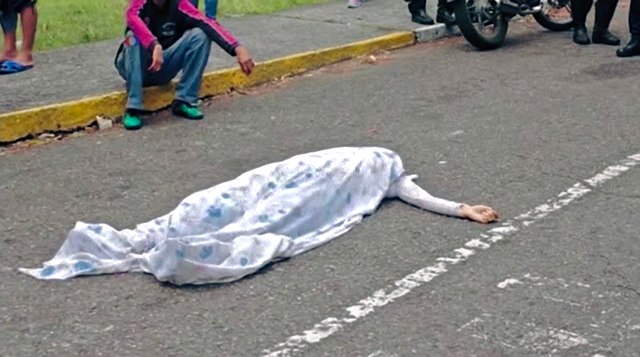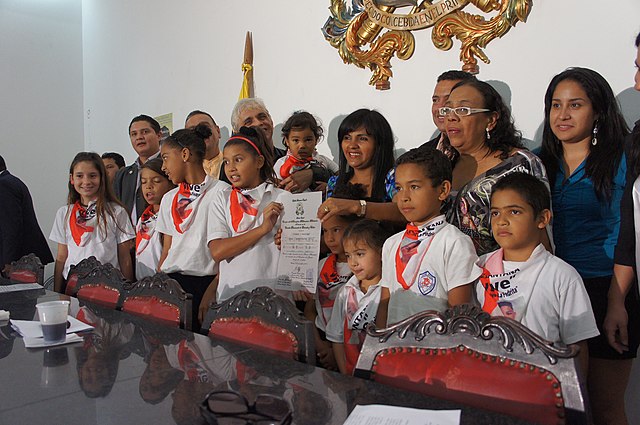In 2014, a series of protests, political demonstrations, and civil insurrection began in Venezuela due to the country's high levels of urban violence, inflation, and chronic shortages of basic goods attributed to economic policies such as strict price controls. Mass protesting began in earnest in February following the attempted rape of a student on a university campus in San Cristóbal. Subsequent arrests and killings of student protesters spurred their expansion to neighboring cities and the involvement of opposition leaders. The year's early months were characterized by large demonstrations and violent clashes between protesters and government forces that resulted in nearly 4,000 arrests and 43 deaths, including both supporters and opponents of the government.
Image: 2014 Venezuelan Protests (12F)
Image: Tear gas used against protest in Altamira, Caracas; and distressed students in front of police line
Image: 2014 Venezuelan protests tear gas response
Late President Hugo Chávez in 2010.
Colectivos are far-left Venezuelan armed paramilitary groups that support the Bolivarian government, the Great Patriotic Pole (GPP) political alliance and Venezuela's ruling party, and the United Socialist Party of Venezuela (PSUV). Colectivo has become an umbrella term for irregular armed groups that operate in poverty-stricken areas.
Colectivos gathered during the Mother of All Marches in 2017
Two students of the Central University of Venezuela wrestle with two government supporters, one of them armed, on 7 November 2007. One of the students, Gerardo Olivares (at the right), was shot in the leg.
Body of Paola Ramírez
Children of the La Piedrita colectivo receiving awards at the Palacio Municipal de Caracas.








